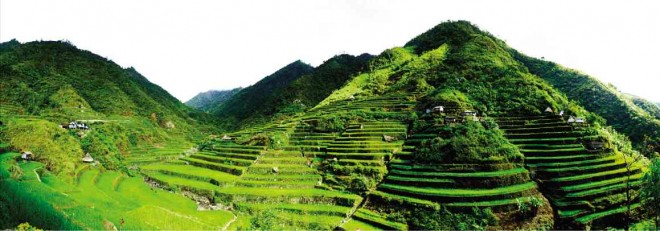
Don’t go chasing waterfalls, please stick to the rivers and the lakes that you’re used to…”
Thankfully, Benigno “Bengy” Toda III chose to ignore TLC’s admonition, and went ahead anyway.
Lugging a Phase One digital camera that costs about as much as a Series 5 BMW, Toda went the extra mile or 20 in order to capture spectacular views of Philippine landscapes that few are privileged to see.
“I’m quite adventurous,” says the photographer. “What I try to do is capture the beauty of the Philippines with my cameras and lenses.”
Braving rough terrain, torrential rains and an excruciatingly painful attack of gout that left him hobbling along with a cane, Toda and his band of intrepid travelers scaled twisting mountain paths and clambered up waterfalls just to get that perfect shot.
“We would go on seven-day walks going up and down mountains,” he says. “Lately we’ve been going into forests looking for waterfalls. We would walk half a day to get to the first waterfall, climb up that waterfall to get to the next waterfall, and climb up again to get to the one after that.”
It’s a hike. Luckily, Toda’s photographic assistants are also experienced mountaineers. Going on a shoot is mounting an expedition, complete with guides and porters, and venturing into areas accessible only on foot, where the chances of running into people with “no permanent address” are better than even.
The more sedentary among us can admire the results of Toda’s exertions in “Chasing Waterfalls,” an exhibit of his landscape photographs that opened on June 9 at the National Museum. The exhibit is a follow-up to “Chasing Mountains,” Toda’s first exhibit of landscapes three years ago. The images in the current show will be added to the National Museum’s permanent collection.
“This is the first collection of photographs that they’re keeping,” says Toda. “It’s only now that photography is being seen as a viable art form.”
An honor
“It’s an honor for me to exhibit at the National Museum,” he adds. “They’re recognizing my talent as a landscape photographer, and I’m quite proud of that.”
The son of former Philippine Airlines chairperson and president Benigno Toda Jr., Bengy has had cameras and taken photographs as far back as he can remember. He even minored in photography in college.
But since he established Studio 58 Lab 10—for the last 25 years the go-to place for state-of-the-art film processing and large-format photographic printing—Toda has been better known for making other photographers’ pictures look good.
“I didn’t like to exhibit when I was younger,” he admits.
All that could change now that Toda has found his medium, and his metier.
“I don’t enjoy taking portraits,” he says bluntly. “I don’t see the beauty in taking pictures of faces. But show me something like this…”
He points to the large framed photographs hanging on his office walls: a black-and-white seascape he shot in the Isle of Skye in
Scotland, and a sweeping night vista of Hong Kong harbor.
“Now, this is a picture,” he says.
Like his Philippine photographs, both were taken using the same medium-format digital cameras that have a resolution of 40 to 80 megapixels, 10 times higher than your typical smartphone camera.
Digital versus analog remains a hotly debated issue among photographers, and there is no shortage of purists holding on to their beloved Leicas and Hasselblads and the hoard of Kodak Tri-X and Ektachrome film stored in their freezers.
“I used to shoot 8×10-inch film,” says Toda. “The challenge was, I had to get it right, because I only had two shots. It took me a long time to get to digital. I had to wait until digital could match the sharpness and resolution of my 8×10-in camera. Nowadays digital can do whatever film can do.”
And quite possibly, more.
Toda recently completed “digitizing” the National Museum’s enormous collection of paintings, including priceless Lunas, Hidalgos, Amorsolos and Manansalas, using a specially designed high-resolution digital camera. The results of this three-year undertaking are, in a word, revelatory.
He shows me his reproduction of Juan Luna’s “Spoliarium”: A closer look reveals human figures emerging from the murky darkness that I had never noticed before. The camera can see more than the human eye can, explains Toda.
Mountains, waterfalls, what next? Toda’s next photographic expedition will take him to Iceland. In the meantime, he’s keeping himself busy taking aerial landscapes—from a helicopter.